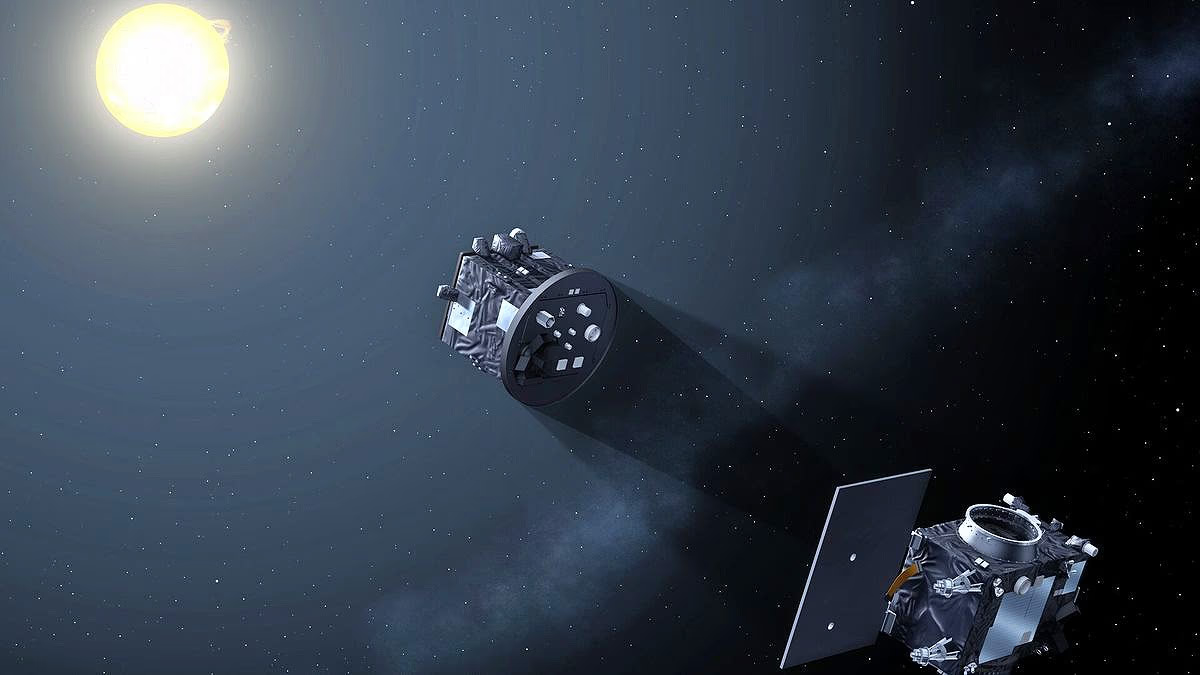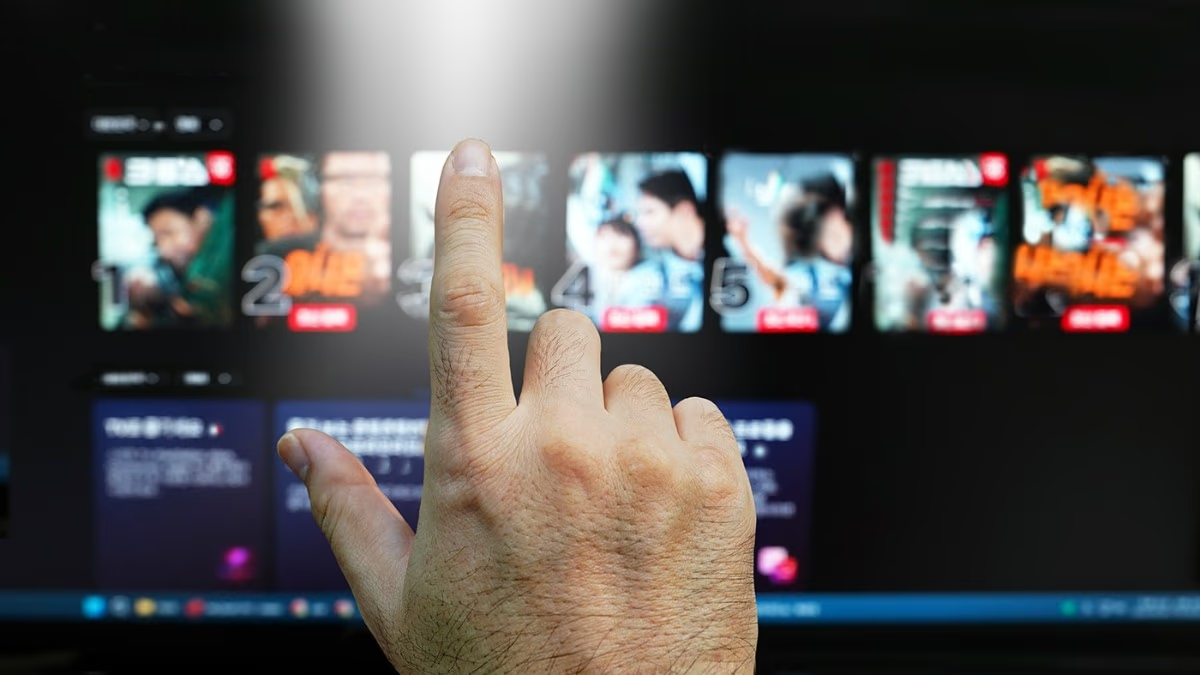The Indian Space Research Organisation (ISRO) is all set for a spectacular launch on December 4, 2024, at 4:08 PM, as it propels the European Space Agency’s (ESA) Proba-3 Mission into orbit from the iconic PSLV-XL rocket at the Satish Dhawan Space Centre in Sriharikota.
Read more:
Watch the Mission Story Unfold in the Video Below...
Where to Watch Live...
You can catch the live stream of this thrilling launch on YouTube or follow the live link on ISRO’s official site. Here’s the YouTube link -
Read more:
Delve into ISRO's Remarkable Rocket...
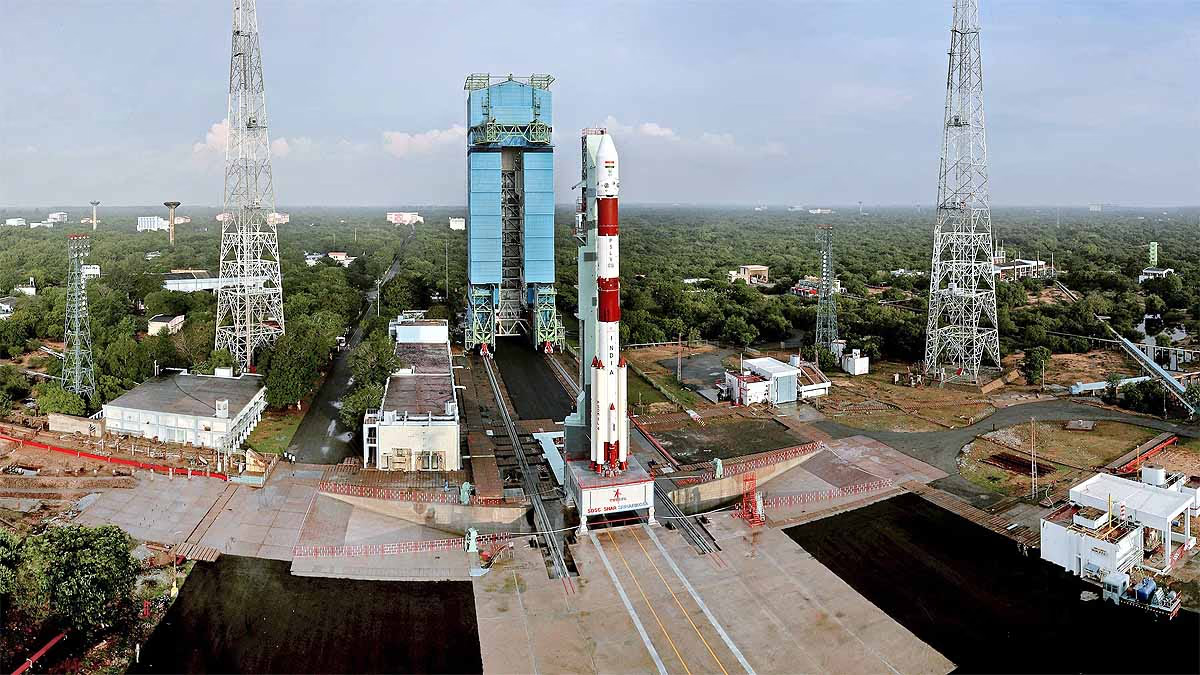
Source: aajtak
This mission will see ISRO leveraging the formidable power of the PSLV-C59 rocket, marking its 61st flight and the 26th flight for the PSLV-XL version. Towering at 145.99 feet and weighing 320 tons at liftoff, this four-stage rocket will deliver the Proba-3 satellite into a unique elliptic orbit measuring 600 x 60,530 km in approximately 26 minutes.
Learn About the Proba-3 Satellite...
Proba-3 is pioneering the precise formation flying satellite technology. Not just one, but two satellites weighing a combined total of 550 kilograms will be launched. The Coronagraph Spacecraft and the Occulter Spacecraft are the key players.
Read more:
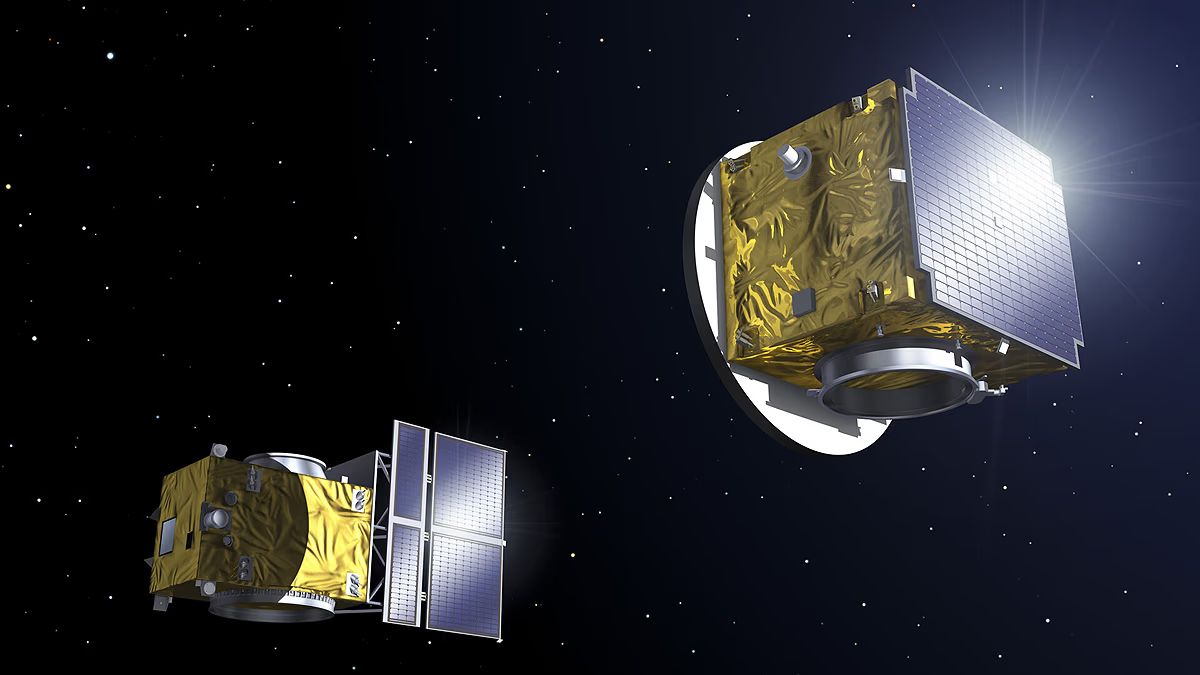
Source: aajtak
The Coronagraph Spacecraft...
Weighing 310 kilograms, this satellite will face the sun equipped with laser and visual-targeting systems. It features the ASPIICS (Association of Spacecraft for Polarimetric and Imaging Investigation of Corona of the Sun) and the 3DEES (3D Energetic Electron Spectrometer) instruments to study gaps between the sun's outer and inner corona. It mimics a solar eclipse with the moon’s blackout of the sun.
The Occulter Spacecraft...
Weighing 240 kilograms, this spacecraft aligns behind the Coronagraph, akin to the Earth’s positioning during a solar eclipse with the moon between them. It carries DARA (Digital Absolute Radiometer Science Experiment Instrument) to study data from the corona.
Read more:
Exploring the Gap Around the Sun
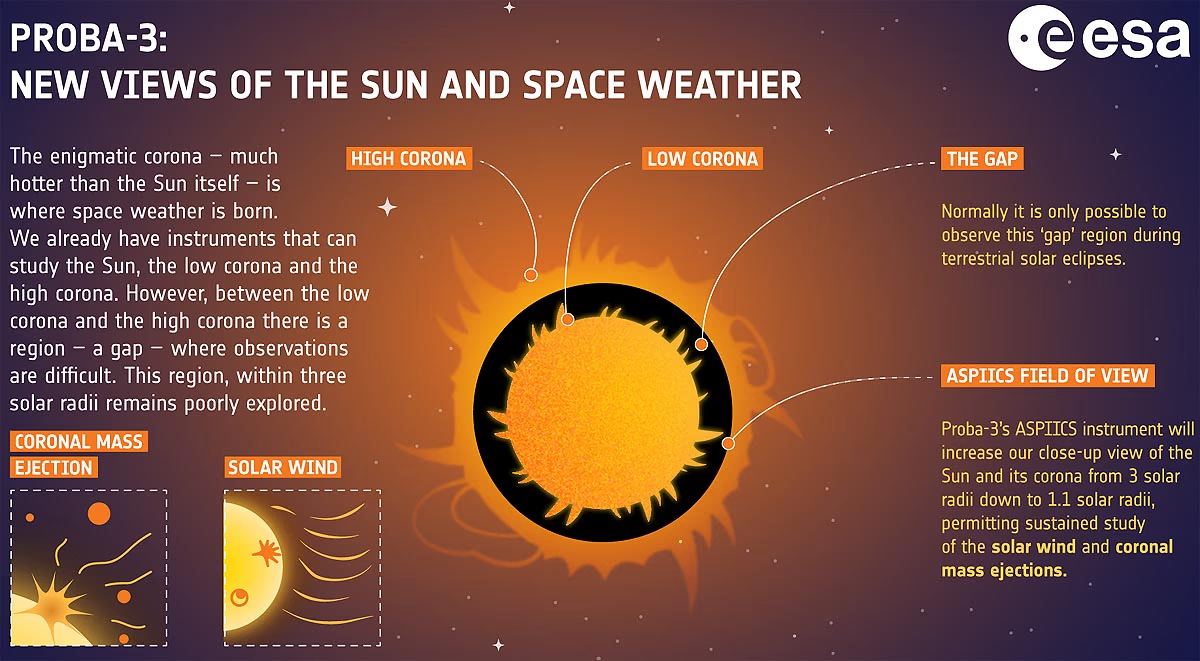
Source: aajtak
These satellites will study the solar corona while orbiting Earth in a 150-meter aligned configuration, focusing on the shaded area seen in solar eclipses. The Proba-3 mission will focus on this area termed the high and low corona.
The ASPIICS instrument will streamline studies on the gap, enabling insights into solar winds and coronal mass ejections.
Through these advances, scientists aim to enhance our understanding of solar dynamics and its impact on Earth's space weather. The Proba-3 mission comprises two parts dedicated to these groundbreaking studies.
